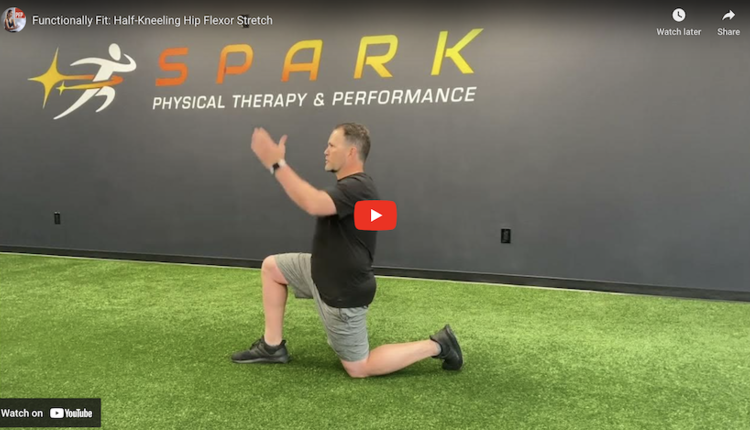We all know that member retention is one of the keys to a successful club. The difficult part is how to keeping your members from going to the newer, bigger club down the street. The truth is they don't want to leave you; they are comfortable and know everyone. However, your equipment is probably looking a little worn, as compared to a new club. So how do you change their perception?
Keep Your Equipment Up-to-Date
One of the best things you can do is to make sure you stay ahead of your competition with regards to equipment. Even adding or replacing one or two pieces at a time can make a big difference. It shows your members that you care and are paying attention to the market. Maybe it means adding CardioVision or Internet connections on a few pieces (or all) of your cardio.
Whether you are a big club or private training studio, you need to continually think outside the box in order to retain your existing members and attract new ones. In any event, in order to be successful, it's imperative that you regularly upgrade or add new equipment.
Complimentary Services
Many private training studios have found it profitable to add equipment that compliments a fitness club, not necessarily fitness equipment but possibly an aqua massage unit, body wraps, tanning, etc. Most members don't have a lot of time, and if they can get two services under one roof, they most likely will take advantage of it.
Like most business owners, you are probably struggling with finding ways to pay for this new equipment. There are a myriad of options to consider, not to mention the tax benefits or consequences that each of those choices carry.
Advantages of Debt
Most people prefer not to have debt if at all possible, but debt managed properly can be an asset to you. It not only helps to build your business credit rating but can give you some very good tax benefits that you would not have had if you paid cash. There's a lot to be said for using someone else's money, especially when you will be generating additional profits each month by having this new equipment. This is where equipment leasing becomes a major asset to you.
One of my favorite analogies is that you should look at your equipment the same way you would an employee. Both are there to help you generate more business and boost profits. However, you would never consider paying an employee three or four years worth of salary in advance, so why would you pay for equipment ahead of time? By leasing your equipment, it should easily generate enough profits to cover the lease payment as well as additional profits for you.
Leasing Helps Your Cash Flow
Equipment leasing allows you to get the equipment you need now while paying for it over its anticipated lifetime. By leasing your equipment versus paying cash, you can avoid spending extra money today that will adversely affect your cash flow.
There are many benefits to leasing your equipment. The primary advantage is that it allows you to acquire assets now with minimal up-front expenditures. Most equipment leases only require a small deposit. Another financial benefit of equipment leasing is that your lease payment is generally considered to be a rental expense. Thanks to this tax advantage, it helps reduce the net cost of your lease. In addition, a commercial equipment lease will not affect your personal credit like a bank loan or credit card would. This helps immensely, if you decide to, say, buy or refinance a home.
Leases Are Easy to Obtain
Leases are also generally easier to obtain than bank lines and sometimes can be accomplished with an application only. If you have been in business less than two years, you can expect to lease up to $60,000 with just a credit application, and, over two years in business this amount can go as high as $250,000 with an application only.
Leases Are Flexible
Leases also offer more flexible terms than traditional banks, such as a 90-day deferred program. This program allows you to take possession of the equipment now and make no monthly payments for the first 90 days. This is a great tool when adding a new service, as it allows you the time to sell the service to your client and collect the income before having to make any payments.
Banks, for the most part, are not in the market to finance equipment. They understand real estate and auto loans, but when it comes to equipment, they most likely will either ask to put a lien on your real estate or refer you to an equipment leasing company. With an equipment lease, the only thing held as collateral is the equipment being financed, so there are no worries about attaching your home or other assets as additional collateral.
More Qualified than You Think
Many people think they won't qualify for a lease if their credit is less than perfect, which is far from the truth. There are many programs available, even for clients with prior bankruptcies. The rates will be slightly higher, but if your profits are more than your monthly payment, equipment leasing may be the solution for you.
Some Disadvantages of Leasing
There are some disadvantages also. Equipment leasing is not for everyone, all of the time. When you sign a lease, you are committing to payment terms, and most leases cannot be cancelled. This means that if you commit to 36 monthly payments, then you are liable for that. Be sure your lease term and the anticipated life expectancy of the equipment you are leasing coincide with each other. There's nothing worse than making payments on that treadmill that died three months ago!
Tax Deductions
Section 179 of the Internal Revenue Code allows you to fully deduct the cost of some newly purchased assets in the first year (in 2007, you could deduct up to $112,000 in equipment). Although not all equipment is eligible for Section 179 treatment, you can still receive tax savings for almost any business equipment through depreciation deductions.
The best way to approach the equipment leasing puzzle is to speak with a trusted and well-respected equipment leasing company that specializes in fitness equipment. There are many good lease companies, but if they don't specialize in fitness, you probably won't have much success with them. Check with your Business Better Bureau (BBB), and ask your vendor for referrals. Also, call a few lease companies. As an experienced trainer and/or club owner, you will know within minutes if the person on the other end of the phone knows the difference between an elliptical and a treadmill.
Pick the Right Equipment Leasing Company
The key to all good relationships is honesty, so find a company you trust. Be honest with them about your goals and financial situation, and they will be able to guide you towards the best possible solution. Once you've chosen your lease company, they will be a valuable tool for you in growing your company and moving forward. Experienced lease companies attend trade shows, speak with the vendors and are constantly looking at new equipment. They know what is working for other clubs and what isn't. A good lease company could provide a wealth of information to help you decide which equipment will generate more profits!
Debbie Neumann, Director of Financing for Amerifund, moved from













